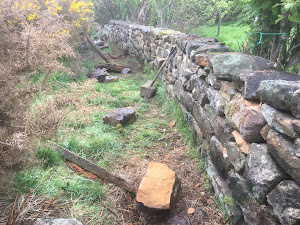Derrick Garbutt, Scarborough 01723 581900 ; derrick.garbutt.homecall.co.uk X
Nick Gwynne; Staintondale; 07866466720* Nick and Pete Maynard often work together. ( He may no longer be walling).
Pete Maynard; Ravenscar, 07904 220469, ;padm13@aol.com www.petemaynardstonework.co.uk
Chris Jones; Scarborough; 01723 341196/07909 630612;
info@drystonewallingexpert.co.uk
Paul Heal; 07709957128; pghdrystonewalling@hotmail.com
Andrew Fordham-Brown; 07884 231085 http://afbrown.com/aboutme.html
Gordon Booth (Westerdale) 07484 681290
Adrian Blant 07969498271 (Glaisdale) www.ajbstonecraft.co.uk
Mark Ellis 01751433248 mobile 07979413729 www.drystone.me.uk, based in Farndale.
https://www.jjharrison.com/walling/ They also do large landscaping contracts. Based in Eskdale. They did the walling around the Whitby Park & Ride.
Nick Coldbeck 07970773728. Based in Harwood Dale. (on FB) X
Graham Payne - Local -Brotton/Danby GAP Dry Stone Walling
gapwalling@gmail.com
Also on facebook.
07761860660
Yorkshire hedgelaying association
Charlie Calvert ,Hartwith, nor Harrogate (Yorkshire Hedgelaying Association)
cbc122.cc@gmail.com 07712 397959
























